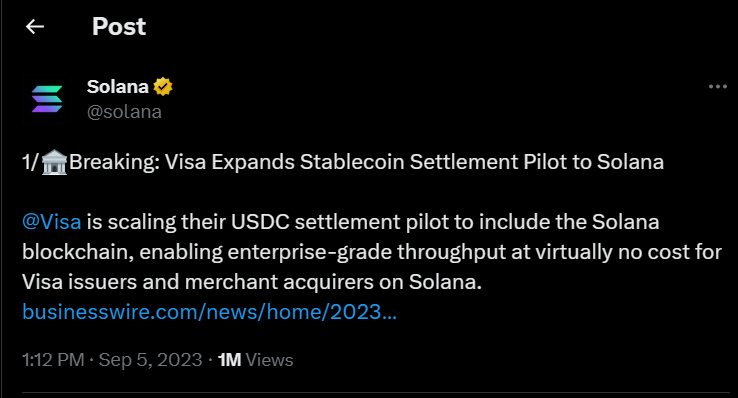Decentralized Finance (DeFi) is brimming with innovation, and one recent development causing a stir is single-sided liquidity (SSL). This approach to liquidity provisioning offers a unique way for users to participate in the DeFi ecosystem and potentially earn rewards, all while simplifying the process.
Traditional Liquidity Pools vs. Single-Sided Liquidity
Traditionally, liquidity provisioning on DeFi platforms involves depositing two different cryptocurrencies into a pool. For example, on a platform like Uniswap, you might contribute an equal value of SOL (Solana’s native token) and USDC (a stablecoin pegged to the US dollar) to create a trading pair. This pool then facilitates trades between users who want to swap SOL for USDC or vice versa. In return for supplying liquidity, you earn a portion of the trading fees generated on that pool.
Single-sided liquidity flips this concept on its head. With SSL, you can provide liquidity to a pool using only one type of token. Imagine being able to contribute just SOL to an SOL/USDC pool! This eliminates the need to manage two separate assets and simplifies the process for users who primarily hold one type of token.
How Does Single-Sided Liquidity Work?
Here’s a breakdown of the mechanics behind single-sided liquidity:
- Choosing Your Range: When providing liquidity through SSL, you specify a price range for your chosen token. This essentially sets limits for when your tokens are actively involved in facilitating trades.
- Automated Management: The DeFi platform utilizes a sophisticated algorithm to automatically convert your deposited token (e.g., SOL) into the other token (e.g., USDC) as needed, ensuring there’s enough liquidity within your specified price range.
- Earning Fees: As long as the price of the token remains within your chosen range, your liquidity continues to participate in trades, and you earn a portion of the associated fees. These fees are similar to those earned in traditional liquidity pools.
- Exiting the Pool: If the price of the token moves outside your designated range, your liquidity is automatically withdrawn from the pool. This helps protect you from potential losses due to significant price fluctuations.
Benefits of Single-Sided Liquidity
There are several advantages to using single-sided liquidity:
- Simplified Participation: SSL eliminates the need to manage two separate tokens, making it easier for users, especially those who primarily hold one type of token, to participate in liquidity provision.
- Reduced Risk: By setting a price range, you can mitigate the risk of impermanent loss, a phenomenon that can occur in traditional liquidity pools when the price of your deposited assets diverges significantly.
- Potential for Higher Returns: Some DeFi platforms offering SSL may incentivize participation with boosted returns compared to traditional liquidity pools. Statistics are still emerging, but some early reports suggest SSL pools can be lucrative for users.
Understanding the Limitations
While SSL offers a user-friendly approach, it’s important to understand its limitations:
- Lower Overall Returns: Since you’re only providing one token, you may earn slightly lower returns compared to traditional liquidity pools where you contribute both sides of the trading pair.
- Limited Flexibility: The ability to customize your price range may be restricted on certain platforms.
- Newer Technology: Single-sided liquidity is a relatively new concept, and the long-term implications are still being explored. It’s crucial to choose reputable DeFi platforms with a proven track record.
Is Single-Sided Liquidity Right for You?
Whether SSL is a good fit depends on your individual goals and risk tolerance. Here are some factors to consider:
- Your Investment Strategy: If you primarily hold one type of token and prioritize simplicity, SSL could be a good option.
- Risk Tolerance: SSL offers protection against impermanent loss, but it doesn’t eliminate all risk factors associated with cryptocurrency investing.
- Platform Selection: Conduct thorough research to choose a secure and reliable DeFi platform offering SSL with transparent fee structures.
Here are 3 projects offering SSL solutions:
1. Bancor (BNT):
- Native SSL Support: Bancor is a leading DeFi platform known for its Automated Market Maker (AMM) protocol. Bancor natively integrates SSL. This means you can directly deposit a single token into a liquidity pool and automatically benefit from trades occurring within a designated price range. Bancor’s SSL implementation simplifies the process and eliminates the need for managing two separate tokens.
- Impermanent Loss Protection: Bancor’s Impermanent Loss Protection feature helps mitigate a potential downside of liquidity provision. This can be particularly beneficial for users who are new to SSL or prefer a more risk-averse approach.
2. Uniswap v3 (UNI):
- Configurable Liquidity Pools: Uniswap v3, the latest iteration of the popular decentralized exchange, offers greater flexibility for liquidity providers. While not strictly SSL in the traditional sense, Uniswap v3 allows users to concentrate liquidity within specific price ranges. This offers a similar benefit to SSL by focusing your token’s impact on trades occurring within your chosen price zone.
- Increased Capital Efficiency: By concentrating liquidity, you can potentially earn higher fees on your deposited tokens compared to traditional Uniswap v2 pools. However, this also introduces additional risk if the price moves outside your designated range.
3. Orbs Liquidity Nexus (ORBS):
- Single-Sided Farming Across DEXes: Orbs Liquidity Nexus is a DeFi infrastructure solution that aims to simplify access to liquidity across various Decentralized Exchanges (DEXes). Their single-sided farming feature leverages SSL principles. You can deposit a single token into the Nexus, and it gets automatically distributed to liquidity pools on different DEXes supporting SSL.
- Multi-DEX Exposure: This approach allows you to participate in liquidity provision on multiple platforms without managing individual pools. However, it’s crucial to research the specific DEXes involved and understand their associated risks and fees.
The Future of Single-Sided Liquidity
Single-sided liquidity is a dynamic innovation in the DeFi space. As the technology matures, we can expect to see increased adoption as more users discover the ease of SSL.
Personal Note From MEXC Team
Check out our MEXC trading page and find out what we have to offer! There are also a ton of interesting articles to get you up to speed with the crypto world. Lastly, join our MEXC Creators project and share your opinion about everything crypto! Happy trading! Learn about interoperability now!
Join MEXC and Get up to $10,000 Bonus!
Sign Up


